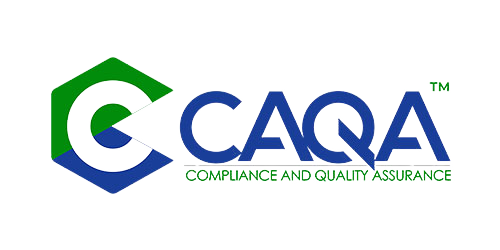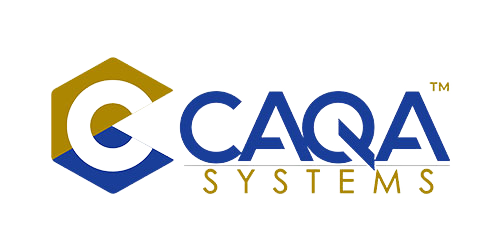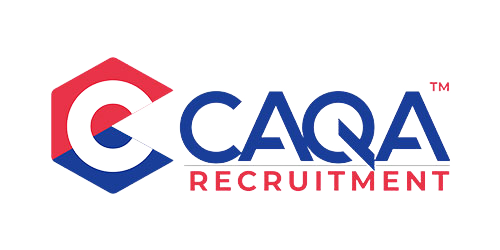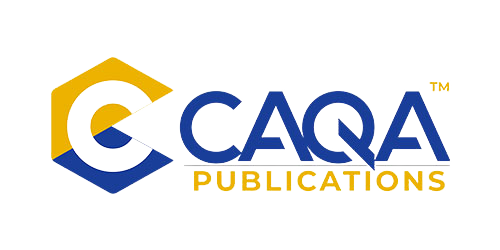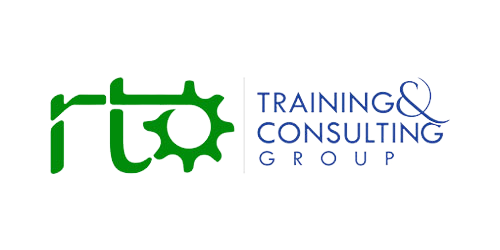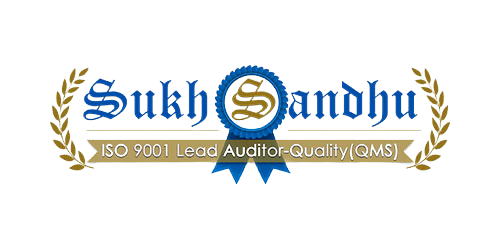THE CRITICAL COUNTDOWN: TIME IS RUNNING OUT FOR RTO COMPLIANCE
The Australian vocational education landscape is poised for its most significant regulatory overhaul in over a decade, with the countdown to 1 July 2025 rapidly approaching. This deadline marks a pivotal moment for the sector, ushering in a new era of compliance and quality assurance that will redefine the operations of every Registered Training Organisation (RTO). This is not a distant milestone to be addressed in future planning cycles—it is an immediate and pressing challenge that demands urgent, comprehensive action from any RTO intending to remain operational beyond mid-2025. The revised Standards for RTOs are not merely an update of existing compliance requirements; they represent a fundamental transformation in how quality, accountability, and student-centred practices are defined and implemented in vocational education.
These changes aim to enhance the overall quality of vocational education, ensuring that students receive the training and support they need to succeed in a competitive, modern workforce. The revised Standards place a stronger emphasis on outcomes-based education, robust accountability measures, and the integration of student-focused policies and practices. This comprehensive reimagining of the RTO framework requires organisations to go far beyond surface-level compliance. It demands a deep understanding of the new requirements, thorough planning, and a proactive approach to embedding these changes into every facet of their operations.
Despite the magnitude of these reforms, a concerning number of RTOs remain dangerously unprepared. Many have yet to fully grasp the scope and implications of the new standards, let alone begin the extensive transformation required to meet them. This inaction is not just risky but potentially catastrophic for organisations that fail to act in time. The scale of the changes demanded by the 2025 Standards cannot be adequately addressed through last-minute compliance efforts, rushed policy updates, or superficial system tweaks. Meeting these new requirements will require methodical planning, a thorough redesign of internal systems, and a cultural shift within organisations—a shift that prioritises long-term quality over short-term fixes.
RTOs must start taking action now to ensure they are not left behind. This means conducting detailed gap analyses to identify areas of non-compliance, developing clear action plans, and allocating the necessary resources to drive transformation. Staff training, stakeholder communication, and ongoing monitoring will also play critical roles in ensuring a smooth transition. Waiting until the last minute is not an option. The changes demanded by the 2025 Standards are too significant, too intricate, and too vital to vocational education’s future to be dealt with hastily or half-heartedly. Only through immediate, sustained, and strategic effort can RTOs position themselves to thrive in this new regulatory environment.
THE RISK REVOLUTION: EMBEDDING STRATEGIC RISK MANAGEMENT
Perhaps the most profound operational change demanded by the 2025 Standards is the elevation of risk management from a peripheral compliance function to the central organising principle of RTO operations. This revolution in risk orientation demands immediate action on multiple fronts.
THE COURSE RISK MATRIX: STRATEGIC PRIORITISATION FOR QUALITY
The most successful RTOs are already implementing sophisticated course-level risk rating systems that will fundamentally reshape how resources are allocated and oversight is structured. This approach requires RTOs to:
-
Develop comprehensive risk assessment frameworks that consider multiple risk dimensions for each course, including:
-
Delivery mode risks (face-to-face, online, blended)
-
Cohort vulnerability (international students, disadvantaged groups, remote learners)
-
Industry requirements (high-risk occupations, regulated industries, rapidly evolving sectors)
-
Volume considerations (high-enrollment programs that create systemic risk if quality issues emerge)
-
Create multi-tiered risk classification systems that move beyond simplistic high/medium/low categorisations to nuanced risk profiles that capture the complexity of each course's risk landscape
-
Establish direct, explicit links between risk ratings and operational decisions, including:
-
Validation frequency and depth (with high-risk courses receiving more frequent, intensive validation)
-
Internal audit schedules (prioritising high-risk areas for regular review)
-
Resource allocation (ensuring additional support for high-risk programs)
-
Trainer support and development (providing enhanced guidance in challenging areas)
This risk-based approach represents a fundamental shift from the calendar-driven, one-size-fits-all compliance cycles of the past. It demands that RTOs develop sophisticated risk intelligence capabilities and create living systems that respond dynamically to changing risk profiles.
THE LIVING RISK REGISTER: BEYOND COMPLIANCE TO STRATEGIC INTELLIGENCE
Traditional risk registers—often static documents created for compliance purposes and rarely consulted in daily operations—are utterly inadequate under the 2025 Standards. Instead, RTOs must develop integrated risk registers that:
-
Span multiple risk domains, including:
-
Compliance and regulatory risks
-
Quality and educational risks
-
Operational and delivery risks
-
Human resource and capability risks
-
Financial sustainability risks
-
Reputational and market positioning risks
-
Function as living documents that are:
-
Regularly reviewed and updated as part of normal operations
-
Accessible to and used by decision-makers at all levels
-
Explicitly linked to strategic and operational planning processes
-
Supported by clear risk ownership and accountability frameworks
-
Drive proactive risk mitigation through:
-
Early warning systems that identify emerging risks before they manifest as problems
-
Scenario planning that prepares the organisation for potential risk events
-
Layered control systems that provide redundant protection for critical risk areas
RTOs that delay implementing these sophisticated risk management approaches will find themselves fundamentally unprepared for the risk-based regulatory environment that will prevail from July 2025. The time to build these capabilities is now, not in the final months before implementation.
THE STUDENT SUPPORT REVOLUTION: FROM PASSIVE TO PROACTIVE
The 2025 Standards herald a radical transformation in expectations around student support and wellbeing. No longer can RTOs rely on passive, reactive support models that place the burden on students to identify and request assistance. Instead, they must demonstrate proactive, tailored support mechanisms that anticipate and address diverse student needs.
THE COHORT ANALYSIS IMPERATIVE: UNDERSTANDING DIVERSE NEEDS
Leading RTOs are already implementing sophisticated cohort analysis systems that:
-
Systematically identify and profile different learner groups within their student population
-
Analyse the specific challenges and support needs of each cohort
-
Develop tailored support interventions based on these identified needs
-
Track the effectiveness of support mechanisms for continuous improvement
This approach recognises that different student groups—such as international students, apprentices, those with disabilities, or learners from disadvantaged backgrounds—face unique challenges that require targeted support. The one-size-fits-all support model of the past is not merely inadequate but potentially discriminatory under the new standards.
THE COMMUNICATION TRANSFORMATION: ENSURING AWARENESS AND ACCESS
Even the most comprehensive support services are ineffective if students don't know they exist or how to access them. Forward-thinking RTOs are revolutionising their support communication through:
-
Multi-channel communication strategies that ensure information reaches all students regardless of their preferred communication modes
-
Clear, simple language that avoids jargon and is accessible to students with varying literacy levels
-
Regular reinforcement of support information throughout the student journey, not just at orientation
-
Culturally appropriate communication that recognises and respects diversity
-
Accessibility features that ensure support information reaches students with disabilities
This communication transformation requires immediate attention, as it often involves extensive review and revision of student-facing materials, systems, and processes.
THE ACCESS GUARANTEE: MEANINGFUL CONNECTIONS WITH TRAINERS
Perhaps the most fundamental aspect of student support is ensuring meaningful access to trainers and assessors throughout the learning journey. Under the 2025 Standards, auditors may look for evidence that:
-
Students have scheduled, structured opportunities to interact with trainers beyond formal class time
-
Online and distance learners have equivalent access to trainer support as face-to-face students
-
Support access is monitored and evaluated to ensure it meets student needs
-
Additional access is provided to students identified as at-risk or requiring extra support
This focus on meaningful access challenges RTOs to rethink trainer workloads, scheduling, and communication channels—changes that cannot be implemented overnight and require immediate planning and resource allocation.
THE FEEDBACK LOOP: CONTINUOUS IMPROVEMENT IN SUPPORT
Leading RTOs are implementing comprehensive feedback mechanisms that allow for continuous refinement of support services, including:
-
Regular, targeted surveys specifically focused on support services
-
Focus groups with representatives from different student cohorts
-
Analysis of support utilisation data to identify gaps or underserved groups
-
Formal review processes that translate feedback into action
These feedback systems must be more than token gestures—they must demonstrate that student input directly influences support service design and delivery, creating a continuous improvement cycle that enhances the student experience over time.
THE WORKFORCE DEVELOPMENT IMPERATIVE: BEYOND TRAINER QUALIFICATIONS
The 2025 Standards demand a holistic approach to workforce development that extends far beyond the traditional focus on trainer qualifications and professional development. This expanded focus requires immediate action to build organisational capability across all roles and levels.
THE COMPREHENSIVE PD REVOLUTION: ALL STAFF, ALL LEVELS
Forward-thinking RTOs are implementing organisation-wide professional development frameworks that:
-
Include all staff, from frontline administrative personnel to senior leadership
-
Provide role-specific training tailored to each position's unique qualities and compliance responsibilities
-
Link individual development plans to organisational strategic goals and quality outcomes
-
Build capability in critical areas such as risk management, student support, and digital delivery
This comprehensive approach recognises that quality outcomes depend on the capability and engagement of the entire RTO workforce, not just those in direct training roles.
THE ROLE-SPECIFIC TRAINING MATRIX: TAILORED CAPABILITY BUILDING
Leading RTOs are developing sophisticated role-specific training matrices that map required capabilities against different organisational roles. For example:
-
Administrative staff may require training in compliance basics, student support navigation, and data integrity
-
Trainers need ongoing development in assessment validation, industry currency, and inclusive teaching practices
-
Leadership requires capability building in governance, ethical decision-making, and strategic risk management
This tailored approach ensures that every staff member has the specific knowledge and skills needed to contribute to quality outcomes within their particular role.
THE ACCOUNTABILITY FRAMEWORK: ENSURING DEVELOPMENT TRANSLATES TO PRACTICE
The most sophisticated RTOs are implementing robust accountability systems for professional development that:
-
Clearly document responsibility for planning, delivering, and evaluating development activities
-
Track participation, completion, and application of learning in practice
-
Link professional development outcomes to performance management and career progression
-
Ensure that development activities translate into improved practice and quality outcomes
This accountability framework transforms professional development from a compliance exercise to a strategic investment in organisational capability and quality.
THE ASSESSMENT REVOLUTION: AUTHENTICITY, VALIDITY, AND WORKPLACE RELEVANCE
Assessment remains the cornerstone of VET quality, and the 2025 Standards raise the bar significantly in this critical area. RTOs must act immediately to transform their assessment approaches, focusing on three key dimensions.
THE WORK INTEGRATION IMPERATIVE: REAL-WORLD APPLICATION BEFORE ASSESSMENT
The 2025 Standards place unprecedented emphasis on ensuring students have opportunities to apply their skills in authentic contexts before assessment. Leading RTOs are:
-
Redesigning learning sequences to ensure skill application precedes formal assessment
-
Developing or enhancing simulated work environments where real workplace experience is not feasible
-
Strengthening industry partnerships to provide authentic application opportunities
-
Creating documented linkages between application experiences and subsequent assessment activities
This focus is particularly critical in high-cost or high-risk units, where resource constraints might tempt RTOs to shortcut the essential application phase of the learning process.
THE VALIDATION TRANSFORMATION: RISK-BASED, COLLABORATIVE, EVIDENCE-DRIVEN
The 2025 Standards demand a complete rethinking of validation processes. Forward-thinking RTOs are implementing risk-based validation systems that:
-
Schedule validation activities based on course risk profiles, with high-risk areas receiving more frequent review
-
Involve diverse stakeholders, including industry representatives, peer assessors, and content experts
-
Focus on evidence of assessment quality and relevance, not just compliance with documentation requirements
-
Generate actionable insights that drive continuous improvement in assessment design and practice
This transformed approach to validation requires immediate attention, as it often necessitates significant revision of validation schedules, processes, and documentation.
THE RPL REVOLUTION: ROBUST, EVIDENCE-BASED, AND CLEARLY DIFFERENTIATED
Recognition of Prior Learning (RPL) receives particular attention in the 2025 Standards, with heightened expectations for process rigour and evidence quality. Leading RTOs are:
-
Reviewing and strengthening RPL policies and procedures to ensure they are robust and defensible
-
Developing clear, detailed guidance for students on acceptable evidence types and quality expectations
-
Implementing mechanisms to verify the authenticity and currency of submitted evidence
-
Clearly differentiating RPL processes from assessment-only pathways to ensure regulatory clarity
This focus on RPL quality requires immediate attention, particularly for RTOs with significant RPL volume or those operating in industries with high workforce mobility.
THE PREPARATION IMPERATIVE: WHY WAITING IS NOT AN OPTION
With the legislative instruments for the revised standards now in place, there is no justification for delay. RTOs that postpone preparation until closer to the implementation date risk non-compliance, reputational damage, and potential regulatory action.
THE GAP ANALYSIS URGENCY: KNOWING WHERE YOU STAND
The critical first step in preparation is a comprehensive gap analysis that:
-
Systematically reviews all current policies, procedures, and practices against the new standards
-
Identifies specific areas requiring update, revision, or complete redesign
-
Prioritises gaps based on risk level and implementation complexity
-
Creates a detailed roadmap for addressing identified gaps
This gap analysis should be undertaken immediately, as it provides the essential foundation for all subsequent preparation activities.
THE ACTION PLAN IMPERATIVE: STRUCTURED, TIMEBOUND, AND RESOURCED
Following the gap analysis, RTOs must develop detailed action plans that:
-
Assign specific responsibilities for each preparation activity
-
Establish clear timelines that ensure completion well before the implementation deadline
-
Allocate adequate resources, recognising that preparation may require significant investment
-
Include regular progress reviews and contingency planning for potential delays
These action plans must be living documents, regularly reviewed and updated as the preparation process unfolds and new challenges or opportunities emerge.
THE STAFF ENGAGEMENT MANDATE: BUILDING UNDERSTANDING AND OWNERSHIP
Successful implementation depends on staff understanding and buy-in. Leading RTOs are:
-
Providing comprehensive briefings on the new standards and their implications
-
Involving staff at all levels in the preparation process
-
Creating opportunities for staff to contribute ideas and feedback
-
Recognising and celebrating progress to maintain momentum and motivation
This engagement process should begin immediately, laying the groundwork for the cultural transformation that the new standards demand.
THE TECHNOLOGY LEVERAGE: STREAMLINING IMPLEMENTATION AND EVIDENCE
Forward-thinking RTOs are harnessing technology to support their preparation efforts, including:
-
Digital compliance management systems that streamline policy updates and version control
-
Evidence mapping tools that link requirements to supporting documentation
-
Learning management systems that facilitate staff training on new requirements
-
Data analytics platforms that support risk assessment and monitoring
These technological investments should be considered immediately, as they can significantly reduce the administrative burden of preparation and create more sustainable compliance systems for the future.
THE AUDIT REALITY: PREPARING FOR SCRUTINY
While the regulatory approach may be evolving toward greater collaboration and support, RTOs must remain prepared for audit at any time. This means having:
-
Up-to-date, accessible evidence of compliance across all standards
-
Clear links between policies, procedures, and supporting evidence
-
Documentation of continuous improvement activities
-
Evidence of meaningful engagement with feedback and complaints
This audit readiness must become a continuous state, not a periodic preparation exercise—a fundamental shift in approach that requires immediate attention and sustained effort.
THE STRATEGIC OPPORTUNITY: BEYOND COMPLIANCE TO TRANSFORMATION
While the preparation burden is significant, the 2025 Standards also represent a unique strategic opportunity for RTOs to:
-
Streamline and modernise their systems, eliminating unnecessary complexity
-
Deepen engagement with students and industry partners
-
Build a distinctive organisational culture focused on quality and innovation
-
Position themselves as leaders in a transformed VET sector
RTOs that approach the transition as a strategic opportunity rather than a compliance burden will not only meet the new requirements but also emerge stronger, more resilient, and better positioned for future success.
CONCLUSION: THE TIME TO ACT IS NOW
The 2025 Standards are not just another compliance hurdle to clear—they represent a fundamental reimagining of what quality means in vocational education. The transformation they demand cannot be achieved through last-minute scrambling or superficial policy updates. It requires immediate, sustained action across multiple dimensions of RTO operations.
Those RTOs that act now—systematically analysing gaps, developing comprehensive action plans, engaging staff at all levels, and harnessing technology to support implementation—will not only ensure compliance but position themselves as leaders in the new VET landscape. Those that delay risk not just non-compliance but existential threats to their operations and reputation.
The clock is ticking. The future of vocational education in Australia depends on how RTOs respond to this implementation imperative. The time to act is not tomorrow, or next month, or next year—it is today.










